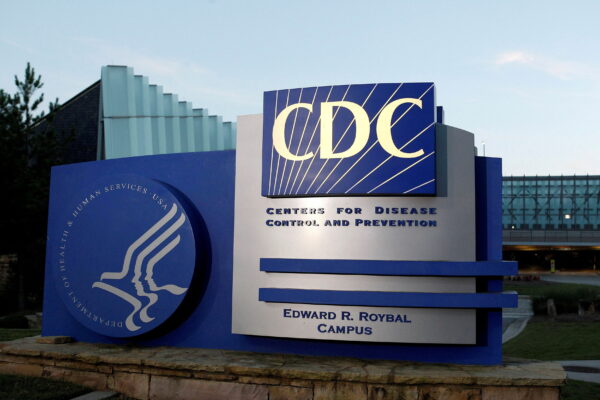
This photomicrograph shows the Shigella bacteria.
The U.S. Centers for Disease Control and Prevention (CDC) recently issued warnings about the rise of an antibiotic-resistant form of Shigella across the United States, saying that clinicians should be on alert.
The CDC held a call on Tuesday with clinicians and other officials about the rise of the drug-resistant bacteria, and a release said that “clinicians should understand the nuances of testing and managing infections, especially when treating patients from populations at increased risk of drug-resistant shigellosis.”
“We do not have all the answers today,” Dr. Louise Francois Watkins, an official with the CDC’s National Center for Emerging and Zoonotic Infectious Diseases, told others on the call. There are no official recommendations for antibiotics, she said.
“The problem of antimicrobial resistance is actually bigger than Shigella,” Watkins added to NPR on Friday, noting that “one of the major drivers of antibiotic resistance is inappropriate antibiotic use.” She advised people to only take antibiotics when prescribed.
During Tuesday’s call, UK health officials said they analyzed about 185 shigella cases in the United Kingdom since 2021, and half required antibiotic treatment. About 87 percent of the cases were in presumed homosexual males, they said.
About a week ago, the CDC issued a health alert over drug-resistant Shigella bacteria. About a week before that, the European Centre for Disease Prevention and Control sent out a similar bulletin and said there have been 221 confirmed and 37 possible cases among people who recently visited Cabo Verde off of West Africa since September.
The CDC alert noted that while most people recover from shigellosis without antibiotics, patients who are fighting off drug-resistant versions of the bug have no routes for treatment. There is no vaccine, and the CDC says that drug-resistant Shigella bacteria can resist antibiotics such as azithromycin, ciprofloxacin, ceftriaxone, trimethoprim-sulfamethoxazole, and ampicillin.
“A recent publication from the United Kingdom outlined a possible strategy for treating severe [drug-resistant] shigellosis using oral pivmecillinam and fosfomycin (for patients with prolonged symptoms or as oral step-down after intravenous treatment) or IV carbapenems and colistin (for hospitalized patients with severe infections or complications,” the health advisory said.
What to Know
Shigella infections generally cause diarrhea that can be bloody, fever, and abdominal cramps. Officials say the bacteria spreads when infected fecal matter enters another person’s nose or mouth.
“If you are having bloody diarrhea more than three times a day and not able to keep anything down, that is a good time to start thinking about going to the ER,” Dr. Payal Patel, an infectious disease doctor, told CBS News this week. He noted that he’s “seeing an uptick in infections that are actually resistant to all first-line antibiotics.”
While shigellosis is historically common among children, the drug-resistant form of the bacteria is more common among adults, said the CDC. The agency is finding more cases of resistant Shigella among males people with HIV, homeless people, and homosexual males.

“XDR Shigella has a real, alarming capacity to spread globally, especially among these vulnerable populations,” Dr. Naeemah Logan, a CDC medical officer, told NPR on Friday, referring to the drug-resistant form of the bug.
Logan told the broadcaster that sanitizing and handwashing are important means by which people can prevent the transmission of Shigella. And the CDC recommends washing your hands after going to the bathroom; following recommendations for safe food handling when traveling abroad; not drinking water from lakes, ponds, or swimming pools; being cautious when handling diapers; and more.
The bacteria infects some 450,000 people a year across the United States, while an estimated 242,000 infections involve drug-resistant strains, the CDC said. About 5 percent of all Shigella test samples collected last year were classified as antibiotic-resistant, up from about 1 percent in 2019, according to the federal health agency.
Between May 2014 and February 2015, the CDC said it found 243 U.S. cases of travel-associated Shigella that were resistant to most antibiotics.
Now, as of Feb. 28, states have reported 148 cases of the drug-resistant strain, while about 39 percent of those cases have led to hospital stays, the agency said. There have been no reported deaths.
“The bacteria can infect a person with as little as 10 organisms, which makes it highly contagious. When passed through the stomach and into the small intestines, the bacteria multiply and can then spread to the colon, resulting in diarrhea, which is the inability for the large intestine to absorb water, and thus stool comes out in a watery form,” Dr. Michael Huynh, an internal medicine hospitalist, told WJHL-TV.




